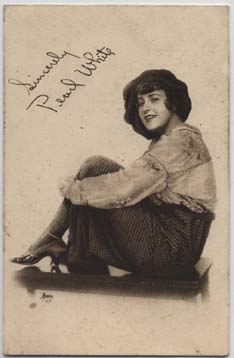Sun 24 Jul, 2011
MISS FREEDOM
Comments (0) Filed under: Hair Net Packages, UncategorizedTags: 1910s, Elizabeth Jane Cochran, Frederic Bartholdi, Joseph Pulitzer, Ken Kesey, Liberty Bell, Miss Freedom, Nellie Bly, Nurse Ratched, Statue of Liberty, The World
It wouldn’t do to let July slip past without acknowledging Miss Freedom. After all, July is the month during which the U.S. celebrates its independence, and that is what the Miss Freedom hairnet package is all about; even though it is ironic that the Miss Freedom hairnet was made of imported English rayon.
With a patriotic red, white, and blue color scheme, and the Liberty Bell depicted behind her, the woman on the cover of the package is a 1940s representation of the Statue of Liberty come to life — minus a torch, a tabula ansata (a tablet evoking the law), and a broken chain at her feet.
The real Statute of Liberty isn’t overtly sexy as is Miss Freedom. The statute, designed by Frederic Bartholdi, is a neoclassical sculpture and represents Libertas, the Roman goddess of freedom; and her formal title is “Liberty Enlightening the World”.
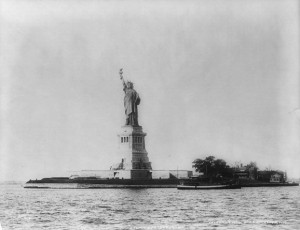 The Statue of Liberty is an icon now but when the idea was first conceived it was a hard sell and fundraising was difficult; in fact, the project was threatened due to a lack of funds. Publisher Joseph Pulitzer of the newspaper The World initiated a drive for donations to complete the project and the campaign resulted in over 120,000 contributors, most of whom gave less than a dollar.
The Statue of Liberty is an icon now but when the idea was first conceived it was a hard sell and fundraising was difficult; in fact, the project was threatened due to a lack of funds. Publisher Joseph Pulitzer of the newspaper The World initiated a drive for donations to complete the project and the campaign resulted in over 120,000 contributors, most of whom gave less than a dollar.
Joseph Pulitzer arrived in the U.S. from Budapest in 1864 and immediately enlisted in the Lincoln Calvary, he was 18. Following the Civil War Joseph tried, unsuccessfully, to hold down a job. He worked as a mule hostler but quit after two days stating “The man who has not cared for sixteen mules does not know what work and troubles are”.
Pulitzer was cut out for more intellectual pursuits than tending mules. Joseph became an attorney in 1868 but unfortunately his broken English didn’t gain him many clients. Finally, later in 1868, Joseph was offered a job as a reporter for the Westliche Post.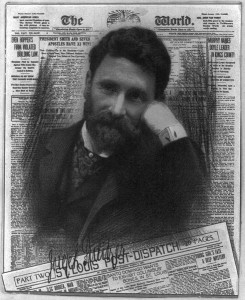
Joseph had a demonstrated flair for reporting and business. In 1872 he bought a share in the Westliche Post for $3,000 and sold it for a profit in 1873. In 1879 he purchased the St. Louis Dispatch and the St. Louis Post and merged them as the St. Louis Post-Dispatch, which remains St. Louis’ daily newspaper. While at the Post-Dispatch, Pulitzer became a champion of the common man with exposes and a hard-hitting populist approach.
By 1883 Joseph Pulitzer was a very wealthy man in a buying mood, so he purchased the New York World from Jay Gould who had been running the paper at a loss (about $40,000/year). The energetic publisher turned the paper around by shifting the focus onto human interest stories, scandal, and sensationalism. Under Pulitzer’s stewardship circulation of The World grew from 15,000 to over 600,000 — it became the largest newspaper in the country.
 In 1887 America’s pioneer female journalist, Elizabeth Jane Cochran (aka Nellie Bly), left the Pittsburgh Dispatch after being relegated to theater and arts reporting — topics considered to be more appropriate for a woman than the hard-hitting stories Nellie preferred to cover.
In 1887 America’s pioneer female journalist, Elizabeth Jane Cochran (aka Nellie Bly), left the Pittsburgh Dispatch after being relegated to theater and arts reporting — topics considered to be more appropriate for a woman than the hard-hitting stories Nellie preferred to cover.
Following her departure from the Pittsburgh Dispatch, Nellie went to New York where she joined the reporting staff of the World and accepted a risky undercover assignment; she agreed to feign insanity to investigate reports of brutality and neglect at the Woman’s Lunatic Asylum on Blackwell’s Island.
Nellie practiced deranged expressions in front of a mirror for a night ( I’d have loved to be a fly on the wall for that)! Having perfected her demented look, she then checked into a working class boardinghouse. She convinced the other boarders that she was crazy and was soon carted off to Bellvue Hospital where she was pronounced “undoubtedly insane” by the head of the insane pavilion.
Dubbed the “pretty crazy girl” by the media (they were unaware of her true identity and that she was employed by Pulitzer), Nellie was committed to the asylum where she experienced the horrendous conditions firsthand. The nurses were abusive and would beat patients who didn’t respond immediately to their commands. Nellie also concluded that many of the patients were as sane as she was. After ten days of mistreatment Bly was released from the asylum at the World’s behest. Her report, “Ten Days in a Mad-House” won her lasting fame. The report was responsible for launching a grand jury investigation which resulted in a budget increase of $850,000 for the Department of Public Charities and Corrections in New York.
 Whenever I think of asylums and evil nurses, I always conjure up a picture of Nurse Ratched (Big Nurse) from the 1975 film based upon Ken Kesey’s novel “One Flew Over the Cuckoo’s Nest”. But I digress.
Whenever I think of asylums and evil nurses, I always conjure up a picture of Nurse Ratched (Big Nurse) from the 1975 film based upon Ken Kesey’s novel “One Flew Over the Cuckoo’s Nest”. But I digress.
In 1895 Nellie Bly married Robert Seaman who was 40 years her senior. Seaman was a millionaire manufacturer, so Nellie retired from journalism to become the president of the Iron Clad Manufacturing Co., which made steel containers. Bly received two US patents, one for a novel milk can, and the second one for a stacking garbage can.
For a time Nellie was one of the leading female industrialists in the US, but she was forced into bankruptcy by embezzling employees and resumed her career as a journalist. She covered the women’s suffrage convention in 1913, and reported from Europe’s Eastern Front during World War I. 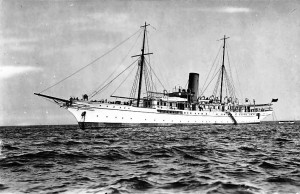
Joseph Pulitzer, who had wisely hired Nellie Bly, died of tuberculosis on his yacht, the Liberty, on October 29, 1911. Pulitzer’s yacht lived on, at least for a while. The Liberty served as a hospital ship during World War I and was broken up in 1937.
Nellie Bly died of pneumonia at St. Mark’s Hospital in New York in 1922 at age 57.

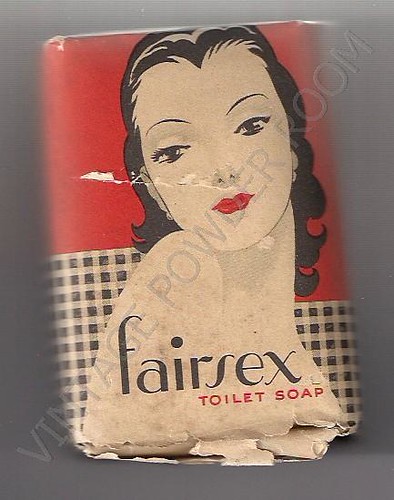
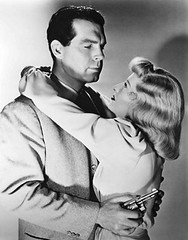

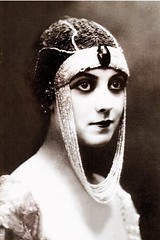
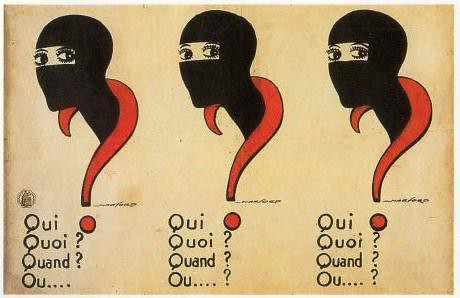
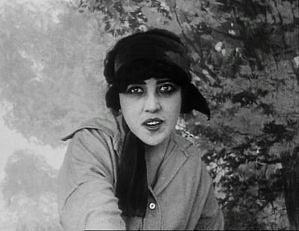

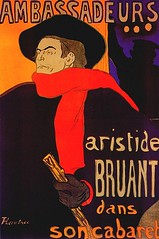
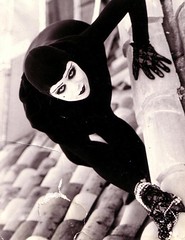

 The earliest ad I found for Vogue Face Powder appeared on July 12, 1914 in the Daily Review, which was a local paper in Decatur, Illinois. According to the advertisement, the purchase of a $.35 ($7.44 in current USD) box of the face powder would get you a free ticket to the Nickel Bijou! No right thinking woman could have passed up an opportunity like that. And what would have been playing on the big screen? The extremely popular serial, “The Perils of Pauline”, which debuted in 1914 and made Pearl White a star. There was a time when Pearl was even more popular than “America’s Sweetheart”, Mary Pickford!
The earliest ad I found for Vogue Face Powder appeared on July 12, 1914 in the Daily Review, which was a local paper in Decatur, Illinois. According to the advertisement, the purchase of a $.35 ($7.44 in current USD) box of the face powder would get you a free ticket to the Nickel Bijou! No right thinking woman could have passed up an opportunity like that. And what would have been playing on the big screen? The extremely popular serial, “The Perils of Pauline”, which debuted in 1914 and made Pearl White a star. There was a time when Pearl was even more popular than “America’s Sweetheart”, Mary Pickford!